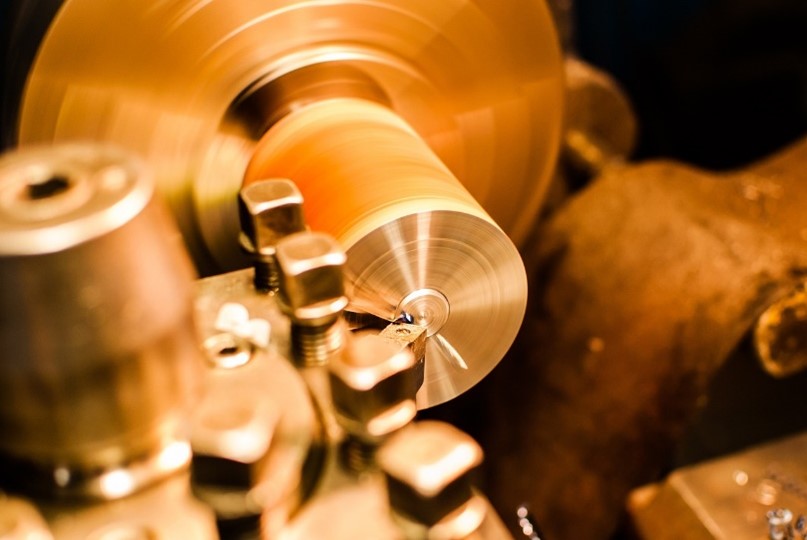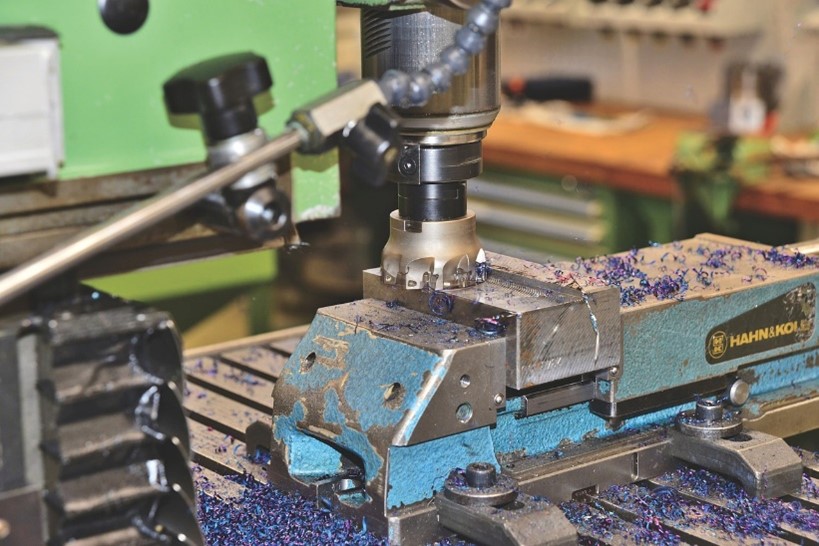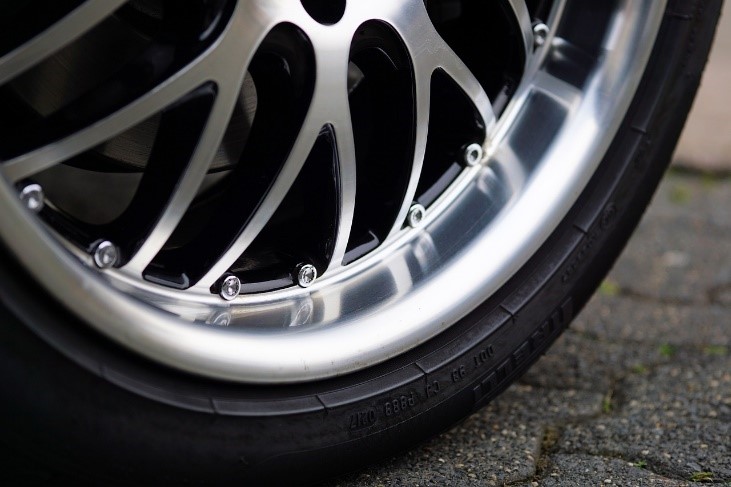Aluminum machining parts are widely used in many places. Since the 19th century, people have learned many ways to use aluminum. It’s not heavy, it doesn’t rust, and it’s even pretty strong. Because of this, people use aluminum to make different metal parts.
Aluminum machining parts are used in engine components, car chassis, and aircraft bodies. They are also prevalent in the electronics industry. You may also find similar uses in the medical, marine, and new energy industries. We will briefly discuss them in the later sections of this article.
In the modern world, CNC machining is trendy for making aluminum-machined parts. CNC aluminum machining parts come with tight tolerances up to 0.01-0.003 mm. Since it is fully automated, you can easily achieve such precision. However, CNC machining may have different types.
Moreover, the correct type of aluminum is also a critical factor. It generally determines the quality of your final metal parts.
This article is a comprehensive buyer’s guide to aluminum machining parts. It can help you choose the correct aluminum-machined parts for your job. It also talks about various grades of aluminum. It enables you to make your research on aluminum machining parts easy. So, no more intro; let’s get started.
What is an Aluminum Machining part?
As the name suggests, these metal parts are made from aluminum. They can usually be made by cutting, shaping, or finishing. Methods like turning, milling, and drilling are widely used in manufacturing. Each process is suitable for unique shapes and sizes.
Modern manufacturing uses CNC technology to make aluminum machining parts. CNC stands for Computer Numeric Control. In this process, you first need to prepare the aluminum block. Next, choose the right cutting tool. Then, you can insert the CNC codes into the device via USB or write them directly. Later, the CNC machine will automatically cut or shape the aluminum. Finally, if necessary, you can run some additional finishing processes.
It is just an overview of the whole process. However, many factors are considered in real-world manufacturing to maintain quality.
When people buy aluminum-machined parts, they often want to know how to prove their quality. In this case, you can look at some quality test certificates. Certificates like ISO 9001, AS9100, RoHs, and material documents are noteworthy.
You can also check whether the company follows the PPAP. “PPAP” stands for Production Part Approval Process. It is essential for long-term use and reliability.
Why Choose Aluminum Machining Parts?
As mentioned earlier, aluminum machining parts are trendy in many applications. They often replace heavier metals like steel, copper, or brass. This shift is due to several key benefits.
Lightweight
Aluminum is much lighter than many metals that people use every day. They often pick this material because it is not very dense. When these materials are used in transportation, the aluminum machining part makes the vehicles lighter. Because of this, your car consumes less fuel and can carry more.
Strength-to-Weight Ratio
Besides being lightweight, aluminum also has an excellent strength-to-weight ratio. It is strong enough for many structural applications. Because of this, people often use aluminum-machined parts in vehicles and aircraft.
Conductivity (Thermal and Electrical)
Aluminum is suitable for both electricity and heat conductivity. It is widely used in heat dissipation, electrical parts, and wiring applications. Some common examples are heat exchangers, electronic housings, and radiators.
Machineability
In metal terms, aluminum is soft. It’s simple to cut, shape, or form. Aluminum is easier to work with than other metals. This is why machining aluminum reduces production time and costs.
Corrosion Resistance
Aluminum naturally forms a protective oxide layer when it comes into contact with air. This layer keeps the metal from rusting. As a result, aluminum works well, even in harsh conditions.
Cost & Recyclability
Aluminum is cheaper than other metals. Besides, you can 100% recycle it. Recycling aluminum requires only the energy to produce new aluminum. Because of this, recycling aluminum is cheap and good for the environment.
How are Aluminum Parts Manufactured? Precision CNC Machining
Aluminum machining parts are mainly made through a precision machining process. As we already said, this can be turning, milling, or cutting aluminum. However, automated machines do most of the production work in the modern world. One very famous tech here is CNC.
Precision CNC machining is a computer-controlled process. You only need to enter the code once, and it will do its job immediately. It uses various machine tools to remove layers of material from a workpiece.
One of the greatest benefits of CNC is precision. It can produce metal parts with high tolerances, up to ± 0.01 mm. The best part is that all the parts are made to ensure consistent quality. However, CNC precision machining can also produce complex geometries. All you need to do is prepare a design and code for the process. Modern CNC devices can automatically interpret designs into codes.
CNC Turning
People also call a CNC turning machine a CNC lathe machine. It mainly rotates a workpiece, and a stationary cutting tool removes material. It primarily creates cylindrical shapes.
A typical CNC turning machine has X, Y, and Z axes. Other turning machines may have more axes, up to 10 or 12. It mainly depends on the complexities of the final pars.
Shafts, bushings, bolts, and fasteners are some applications of CNC turning. This method is ideal for creating round or tubular parts with high precision.
CNC Milling
In CNC milling, the workpiece remains stationary. To cut it, the cutting tool rotates at certain speeds. As per the coding sequence, the cutting tool gives the workpiece the desired shape. Like CNC turning, CNC milling may have multiple axes, up to 10 or 12.
CNC milling can create complex shapes and features, such as slots, holes, and pockets. Milling also creates different flat surfaces and rounded edges.
Engine components like cylinder heads and intake manifolds are made through CNC milling. Milling operations also make PTH, or plating through holes or different vias in PCBs. In the aluminum die-casting factory, milling helps create molds and dies.
CNC Drilling
CNC drilling uses a rotating drill bit to create holes in a workpiece. The drill bit is fed into the material at a controlled speed and depth. You can usually drill on flat or curved surfaces.
However, CNC drilling can be used to make hole patterns in assemblies. It is also the most effective method for threaded holes. Mounting holes and cooling channels in molds are also typical uses.
A Wide Variety of Aluminum Machining Parts & Their Applications
Aluminum machining parts, as you know, offer many more benefits than other metals. These benefits make CNC aluminum machining parts trendy in many industries. In this section, we’ll talk about some commonly used aluminum-machined parts in different fields. This part will significantly help you if you are starting a business or becoming a seller.
Aluminum Car Parts
| Wheels | Chassis Components | Engine Block | Cylinder heads |
| Valve covers | Car ornaments | Aluminum housings | Wheel spacer parts |
| Handles | Clutch parts | Alternator housings | Heat Shields |
| Radiators | Pistons | Driveshafts | After-market auto parts |
Aluminum Engine Components
Every engine needs high-quality aluminum parts. As you know, these parts can conduct both electricity and heat. Because of this, they can dissipate heat when necessary. They mainly improve the performance of the engine. Cylinder heads and pistons are some typical examples here.
Aluminum Aircraft components
Aluminum is also a critical component in air vehicles. As you know, aerospace vehicles must be light and robust. Parts like the fuselage and wings make the airplane lighter. Indeed, these aluminum machining parts are made of high-quality aluminum. Seat ejectors, sear, and wheels are some other parts.
Aluminum machined parts in electronics
Aluminum machined parts find many uses in electronics. People use aluminum to make PCBs, heat sinks, and casings. However, in some devices, cables and connectors are also made of aluminum. Also, aluminum stamped parts are terminals (spade, ring, fork, or bullet).
Aluminum Marine Components
Because of aluminum’s properties, aluminum-machined parts are also trendy in marine components. Typical examples are boat hulls, fittings, propellers, and masts. These parts are ideal for building different types of watercraft.
Aluminum Architectural Machined Parts
Ordinary aluminum architectural machined parts are frames, facades, door handles, and structural components. As you know, these parts are designed for aesthetic appeal and functional support. In most cases, architectural machined parts are custom-made.
New energy and equipment
Aluminum is essential in new energy applications. Some common examples are battery housings, solar panel frames, or wind turbine blades.
Aluminum Alloys for CNC Machining
As you know, aluminum provides excellent machinability. It is easy to work with aluminum on a CNC machine. But when you choose the metal for your job, various grades appear. That’s where you get stuck selecting the best type for your job. Don’t worry! We have a solution for that.
Typically, different grades of aluminum provide various benefits. Some are stronger, while some are resistant to corrosion. That’s why understanding different aluminum grades helps you select the right one.
Heat-treatable alloys
As the name suggests, these aluminum alloys are suitable for heat treatment. This method usually changes aluminum’s mechanical properties. Because of this, heat-treated aluminum can gain more strength, hardness, and durability.
The following table shows the most common grades of heat-treatable aluminum.
| Grades | Characteristics | Typical Uses |
| 2024 | Highly strong, good fatigue resistance, poor corrosion resistance | Aircraft components, military hardware |
| 6061 | Versatile, good mechanical properties, excellent corrosion resistance | Structural frames, car parts, and ship components |
| 7075 | Very high strength, less corrosion-resistant | Aircraft components, bike frames, and high-stress components |
| 6082 | Good strength, excellent corrosion resistance, weldable | Bridges, cranes, trusses, and transport applications |
| 6063 | Good mechanical strength | Architectural use, window frames |
Quenching and aging are the two main steps in the heat treatment of aluminum. Most of the time, the quenching part heats the metal to make a solid solution. After that, it is quickly cooled to keep these elements supersaturated. In the next step, “aging,” the metal is heated to a lower temperature and kept there for a while. This process usually makes the aluminum machining part stronger.
Non-Heat Treatable Alloys
As the name suggests, these aluminum alloys are unsuitable for heat treatment. This means that these aluminum grades rely on their inherent properties. These types of alloys are perfect for use where formability is essential. Besides that, this aluminum is also very resistant to rust.
| Grades | Characteristics | Applications |
| 3003 | Good corrosion resistance | Cooking utensils, chemical equipment |
| 5032 | Good formability, high fatigue strength, and excellent corrosion resistance | Fuel tanks, ship components, and pressure vessels |
| 5083 | High strength, smooth work in harsh environments, and good weldability | Shipbuilding, marine applications, pressure vessels |
| 6060 | Good mechanical properties, excellent surface finish | Furniture, decorative applications, heat exchangers |
How Do You Choose the Right Aluminum Alloys for CNC Aluminum Machining Parts?
We have already learned about the aluminum machining part, where it is used, and its benefits. We also talked about different aluminum alloys. Selecting a suitable aluminum alloy is very important to ensure the best outcome for your project. To do this, you will need to consider a few factors. Let’s check them out and assess why you should use them in your research.
Intended Aluminum Machined Part Function
First, understand the specific application needs of the meta part. As you know, different applications have different needs. For instance, parts for airplanes need to be both light and robust. On the other hand, electronics must be able to move heat well.
Therefore, the alloy’s properties should always match the part’s function. It ensures the part performs well in its intended use.
Needed Strength
The next thing you should consider is the strength needed. In this case, you should always consider the mechanical strength of the aluminum machining part.
Some applications, such as structural components, require high strength. Heat-treatable metals, such as 2024 and 7075, are a great choice. Most of the time, they work great for tough jobs. But choose aluminum metals that can’t be heat-treated for jobs that don’t need to be very strong.
Weight Considerations
Another important aspect of your project is its weight. Lightweight materials are usually more critical in the aerospace, automotive, and marine industries. You already know that lighter parts work better and use less fuel.
The aluminum machining part offers an excellent strength-to-weight ratio. Alloys like 6061 and 7075 are ideal for this type of application.
Exposure to environments
Next, think about where you will use the metal parts. You know that corrosion resistance is essential in difficult places. Metals that don’t rust are suitable for shipping parts and outdoor buildings. A great choice in this case would be a metal like 5052 or 6061.
Some aluminum metals also work well in heavy heat. For example, 6063 is excellent for withstanding high temperatures. When picking an aluminum metal, you can also consider how it will react to chemicals and humidity.
Custom Machined Aluminum Parts at GC Precision Mold
Custom-machined aluminum parts are suitable for specific needs. The title “Custom” tells you their design meets unique requirements. So, these parts can vary in shape, size, and complexity. Custom metal parts are trendy in many industries.
Custom manufacturing is a famous term in the modern world. It is the process of creating products based on unique specs. Rapid prototyping is a term in custom manufacturing. Custom-machined aluminum parts are one of them.
It is an easy way to make unique metal parts that can be used in large quantities. It allows for quick development and testing of prototypes to make aluminum parts. It ensures you have corrected the design before deciding on a large-scale production.
And GC Precision Mold is a leading manufacturer of custom aluminum parts. We use the latest tools and machines. Our aluminum machining parts are thoroughly tested at each stage of production. We offer the best quality possible and follow international standards. So, GC Precision Mold is famous in most countries in the world.
Frequently Asked Questions
What parts are made of aluminum?
Aluminum has many applications. It is commonly found in engines, aircraft structures, electronic housings, medical devices, and car parts. It can also be found underwater or in industrial machinery.
Is it cheaper to machine steel or aluminum?
Machining aluminum is usually cheaper. It is also softer and easier to machine, reducing tool wear and machining time. Overall, this lowers the production cost.
Is machined aluminum stronger than cast aluminum?
Yes, aluminum machined parts are generally stronger than cast aluminum. Precision machining allows control over size and finish and does not create defects.
What is the minimum thickness of machined aluminum?
The minimum thickness of machined aluminum is typically 1 mm for most machining jobs. However, it can go as thin as 0.2 mm for more precise CNC work.
Is 6061 aluminum suitable for machining?
Yes, 6061 aluminum is excellent for machining. It is highly versatile, easy to machine, and has good mechanical properties. You can use it in many applications.
Final Thought
Let’s wrap everything up! Aluminum machining parts offer many benefits. They are lightweight, strong, and resistant to corrosion. Besides, aluminum is cost-effective and recyclable.
You can choose from different grades of aluminum for your project. Each grade has its own unique benefits and uses. Therefore, when selecting the correct grade, first know your project requirements.
If you have any questions, feel free to contact us. Our team of experts is always happy to help.









0 Comments